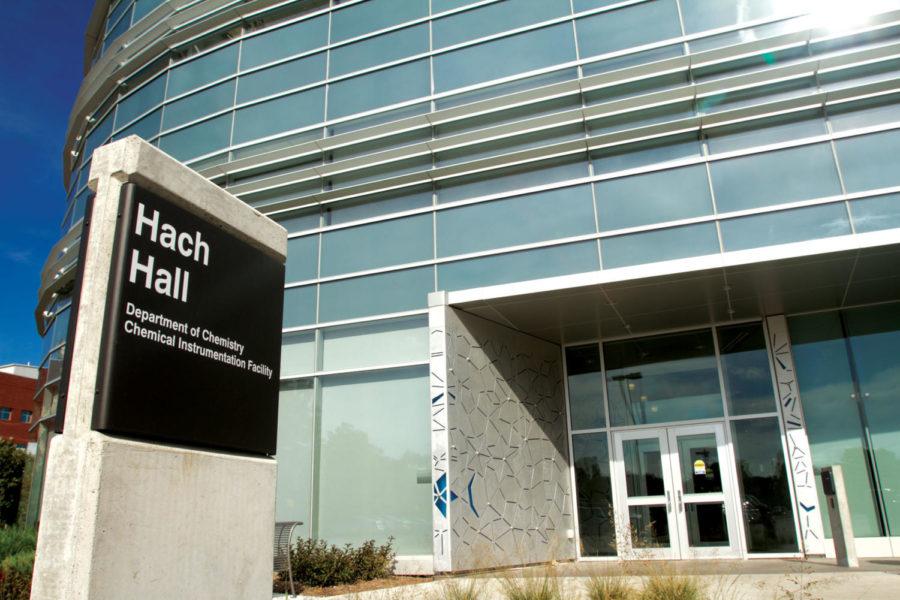Hach Hall debuts on campus
Photo: Nick Nelson/Iowa State Daily
Hach Hall, opened in August 2010, is one of the leading buildings on campus in terms of sustainability as a part of the university’s green initiative. The building makes use of large windows for natural light, automated lighting, low-flow fume hoods with energy recovery and many materials made of recycled matter, among other things.
September 1, 2011
It’s no wonder ISU President Gregory Geoffroy mandated all new construction meet the minimum gold rating. “Laboratory buildings are historically one of the largest consumers of energy,” said project manager Mark Grief.
Introducing Hach Hall: the newest “green” home for the chemistry department on campus. The $74.5 million dollar building houses state-of-the-art classrooms, laboratories and instrumentation. Providing current and future students advanced classrooms, teaching labs and research facilities, chemistry students are pleased with the outcome. It also is important to the university as a whole because of a Board of Regents State of Iowa initiative enacted in 2009 as a response to Gov. Chet Culver’s plan to make Iowa energy independent by 2025.
Hach Hall has received a Gold LEED rating, which cost less to operate and maintain, are energy-efficient and contribute to occupant health and productivity. Recycled material was a key factor in the construction of the building, including the ceiling tile, carpet, copper piping and metal door hinges. So go check out the sustainable works of one of the first science facilities on campus to be LEED certified.
What is LEED?
“LEED is a point-based system where projects earn LEED points for satisfying specific green-building criteria,” Grief said. “Within each of the six LEED credit categories, projects must satisfy particular prerequisites and earn points. The six categories include Sustainable Sites, Water Efficiency, Energy and Atmosphere, Materials and Resources, Indoor Environmental Quality, and Innovation in Design (projects can earn ID points for green-building innovations). The number of points the project earns determines the level of LEED Certification the project receives. LEED certification is available in four progressive levels: Certified, Silver, Gold and Platinum.”







